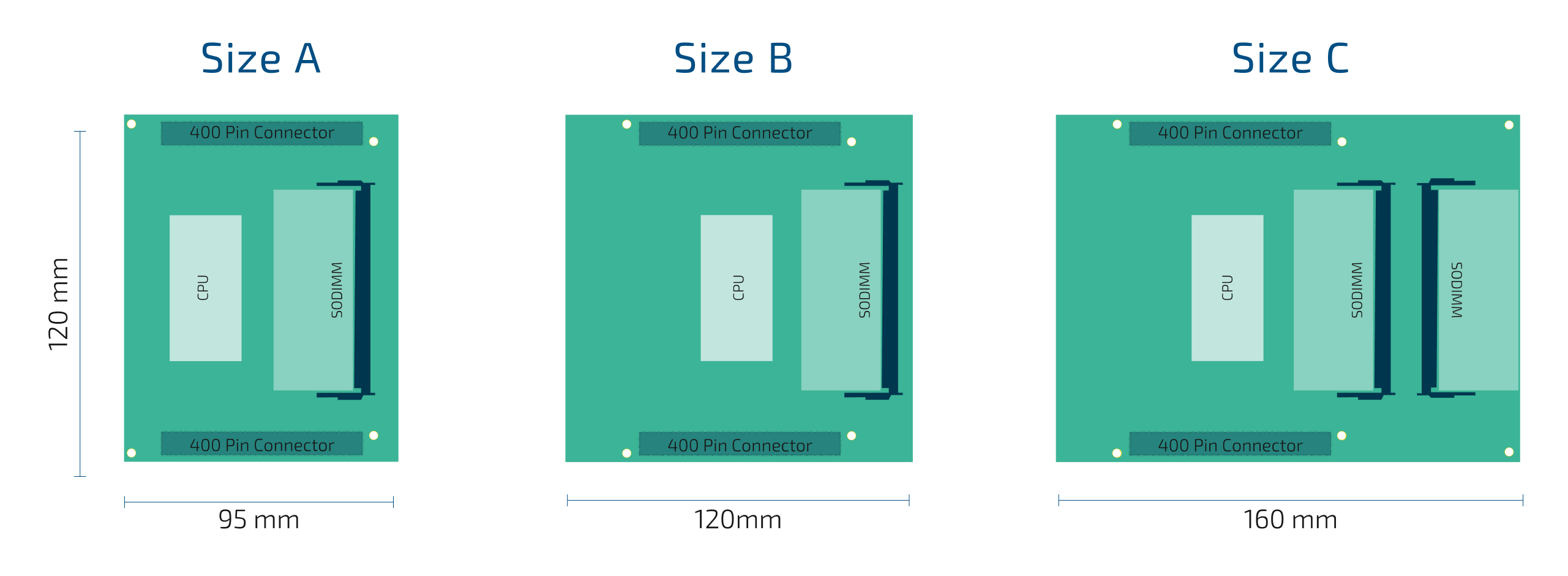For support related inquires, please contact our support team:
Contact SupportCOM-HPC® - NEW COMPUTER ON MODULES STANDARD
Read about reasons why for a new computer on module standard, the technical insights and a comparison with COM Express®

COM-HPC®: HIGH PERFORMANCE COMPUTING
Data growth is unstoppable and the upcoming 5G wireless standard will accelerate it. Experts expect new digital business models that are only conceivable due to the high data transfer rates of the upcoming 5G standard. Applications such as artificial intelligence come with enormous data hunger and require the lightning-fast, algorithm-based evaluation of the huge amount of data. IoT devices, sensors and actuators, of which more are connected to the Internet every hour, continue to produce enormous amounts of data from autonomous vehicles, for example. Hundreds of signals have to be processed in fractions of a second. Many of these scenarios no longer take place in a protected high-performance computing center or in the cloud, but close to where the data originates: on mobile masts, on production lines, in warehouses, at processing plants or in autonomous vehicles, to name just a few.
New concepts for embedded computers are required where existing standards are no longer sufficient to cope with the high volume of data and the computing power required to process this data.
In order to give an answer to the demanding new challenges in embedded computing the PICMG standardization committee has defined a new computer on module standard - COM-HPC® for High Performance Computing.
Find the technical insights and the market informations in these assets:




COM-HPC® Form Factors
COM-HPC®/Mini

Power envelope typ. up to 40W
Up ot 16x PCI Express GenS/6 lanes
Up ot 2x NBase-T (max 10Gb) |
Up ot 4x USB 4 (2x DDI shared with USB 4) |
Module size:
95 x70 mm
COM-HPC®/Client

Power envelope typ. up to 100W
Up ot 48 +1PC Express Gen5/6 lanes
Up to 4 graphics interfaces
Up to 2x 25 Gb Ethernet interfaces
Module size:
Size A: 95 x 120 mm
Size B: 120 x 120 mm
Size C: 160 x 120 mm
COM-HPC®/Server

Power envelope typ. up to 180W
Up to 64 +1 PCI Express Gen5/6 lanes
No graphic interfaces
Up to 8x 25 Gb Ethernet interfaces
Module size:
Size D: 160 x160 mm
Size :E 200 x 160 mm
COM-HPC®/CONNECTOR
In order to support the future oriented pin-out definition a new connector has been introduced with 400 pins. The COM-HPC® standard defines 5mm and 10mm stack height for the carrier connector. The Mini size uses a single connector; all other sizes use two connectors for a total of 800 pins addressing the increasing performance demands and bandwidth needs.
5mm/10mm stack height.

Quick overview regarding details: COM-HPC® and COM-Express®
COM Express®, the successful and worldwide leading standard for Computer-on-Modules since 2005, will continue to provide a reliable and long-lasting service for traditional embedded industrial computing demands. Here we give an overview and comparison of the technical details between COM-HPC® and COM Express® for your orientation:




Dive deep into the Kontron COM-HPC product portfolio!





